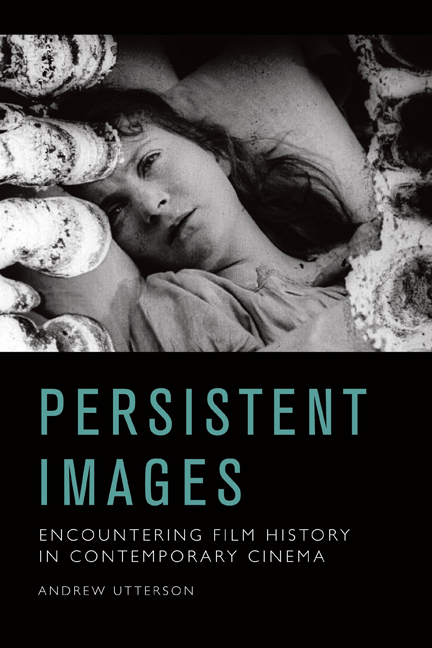Book contents
- Frontmatter
- Contents
- List of Figures
- Acknowledgements
- Introduction
- 1 Media Archaeology and the Memory of a Medium: Dawson City: Frozen Time
- 2 A Drone’s-Eye View of History: Francofonia
- 3 The Movie Theatre as Haunted Space: Shirin and 70×70
- 4 Recalling the Past Lives of Cinema: Uncle Boonmee Who Can Recall His Past Lives
- 5 3D Images at the Edge of History: Goodbye to Language and The Three Disasters
- 6 Voyaging in Deep Time: Voyage of Time: The IMAX Experience
- Notes
- Bibliography
- Index
3 - The Movie Theatre as Haunted Space: Shirin and 70×70
Published online by Cambridge University Press: 26 September 2020
- Frontmatter
- Contents
- List of Figures
- Acknowledgements
- Introduction
- 1 Media Archaeology and the Memory of a Medium: Dawson City: Frozen Time
- 2 A Drone’s-Eye View of History: Francofonia
- 3 The Movie Theatre as Haunted Space: Shirin and 70×70
- 4 Recalling the Past Lives of Cinema: Uncle Boonmee Who Can Recall His Past Lives
- 5 3D Images at the Edge of History: Goodbye to Language and The Three Disasters
- 6 Voyaging in Deep Time: Voyage of Time: The IMAX Experience
- Notes
- Bibliography
- Index
Summary
This chapter focuses on the historical resonance of the movie theatre as a haunted space, inhabited by the memory of a medium and the cumulative history of more than a century of projected cinema. Even while films are streamed, downloaded and otherwise consumed like never before, the particular confluence of projector, screen, film and spectator has assumed altered meaning, mapped in time and space, across physical and psychic histories and geographies. The cinematic experience has been transformed, ontologically, phenomenologically and historically – as symbol, spectre and trace.
Seminal works such as Roland Barthes's ‘Leaving the Movie Theater’ (Barthes 1986 [1975]) and the individual phenomenology of moviegoing described in Stanley Cavell's The World Viewed: Reflections on the Ontology of Film (1971) offer illuminating models of engaging the particular architecture of the movie theatre and for theorising the act of spectatorship. Nevertheless, they no longer adequately account for a time in which the projection of a film within a movie theatre and the primacy of such sites recedes into history, assuming altered historicity in the process. Ghostliness, spectrality and what Jacques Derrida describes as ‘hauntology’ (Derrida 1994 [1993]), part of a broader spectral turn, reflect the experience of seeing and hearing a film in a site whose increasing obsolescence has come to represent the fleeting and ephemeral, notions that have become an increasingly important part of how we historicise cinema. The movie theatre exists as a site of spatialised media archaeology, the symbol of a medium defined simultaneously by its presence and absence, a material apparatus and its negation, embodied experience and its recollection.
Spanning consecutive case studies across countries and modes, the chapter begins with a single screening as an exploration of the technology, architecture and site-specific cartographies of spectatorial affect, real or illusory, in the reflexive representations of Abbas Kiarostami's Shirin (2008). It then considers the interconnected network of a life's worth of such screenings as documented by Iain Sinclair in his curatorial project and cinematic memoir 70×70: Unlicensed Preaching: A Life Unpacked in 70 Films (2014). In each of these instances of experimental historiography, the emphasis is on the legacy and historical (re-)enactment of cinema as projected experience, a means of exploring and documenting the movie theatre as a still resonant site and space of shared history and cultural memory.
- Type
- Chapter
- Information
- Persistent ImagesEncountering Film History in Contemporary Cinema, pp. 41 - 71Publisher: Edinburgh University PressPrint publication year: 2020



